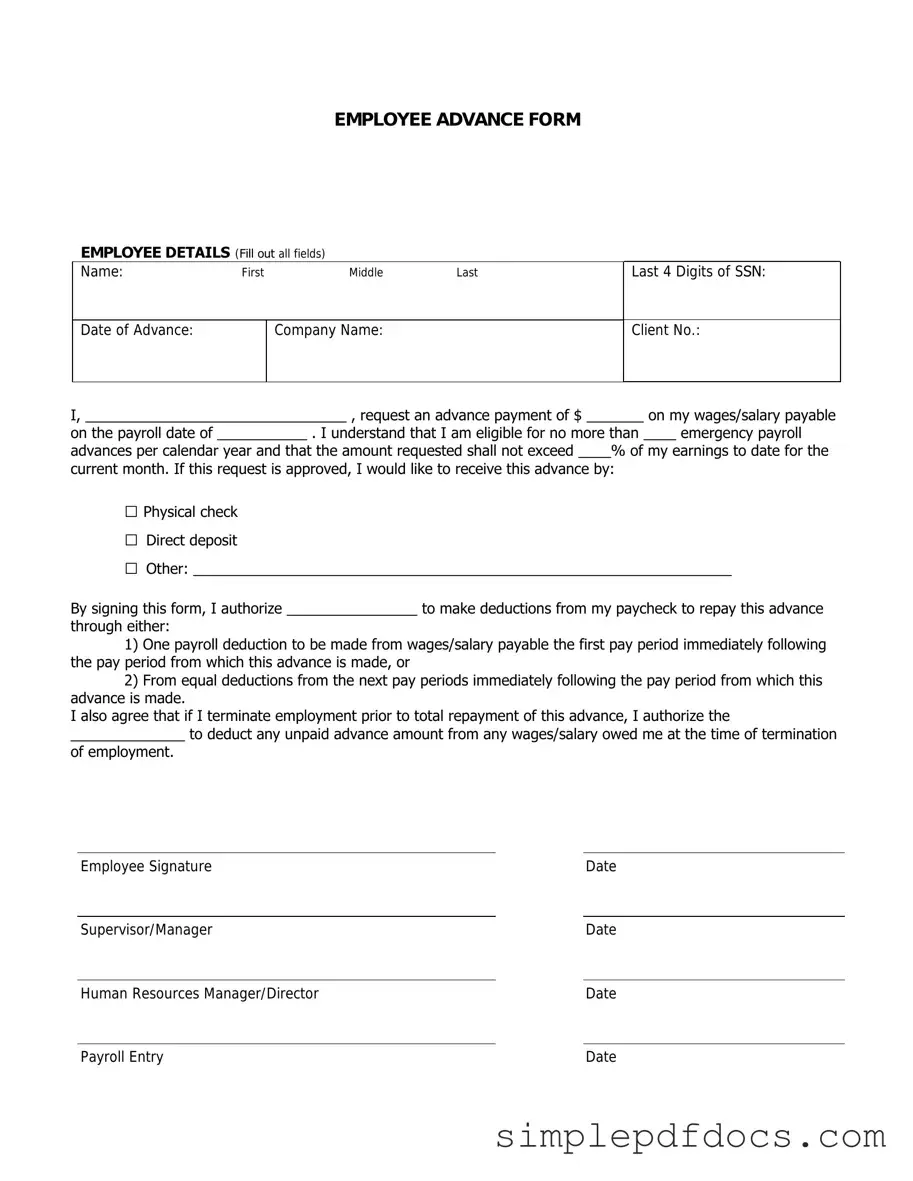Fill Your Employee Advance Form
The Employee Advance form serves as a crucial tool for employees seeking financial assistance from their employers before their scheduled pay dates. This form allows workers to request a portion of their earnings in advance, providing a safety net during times of financial need. Understanding the intricacies of this form can empower employees to navigate their workplace policies effectively.
Get Document Here
